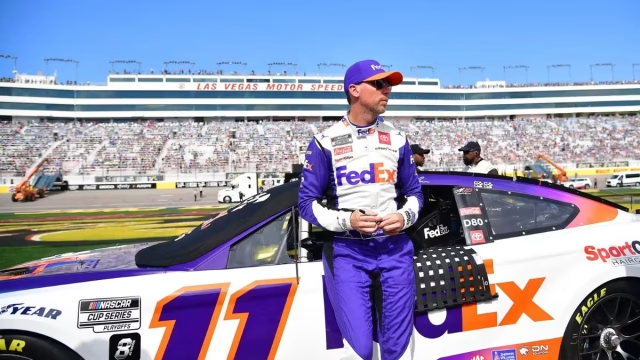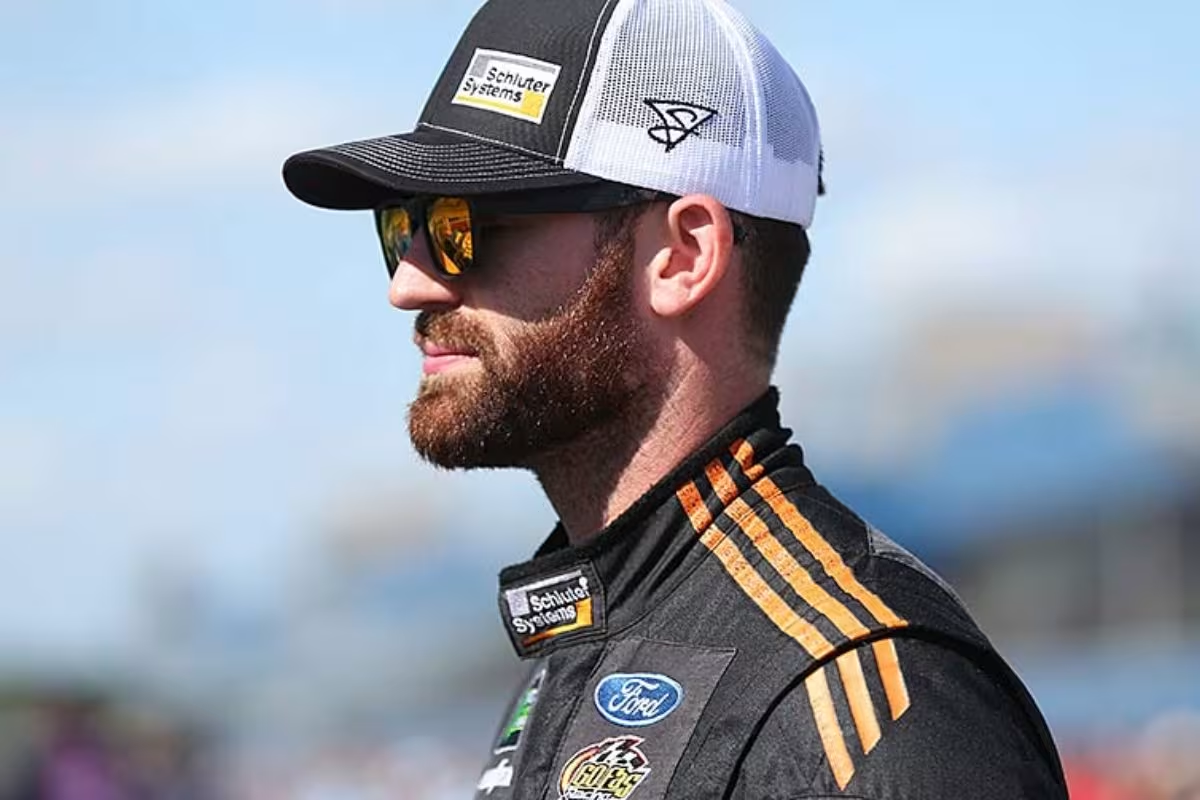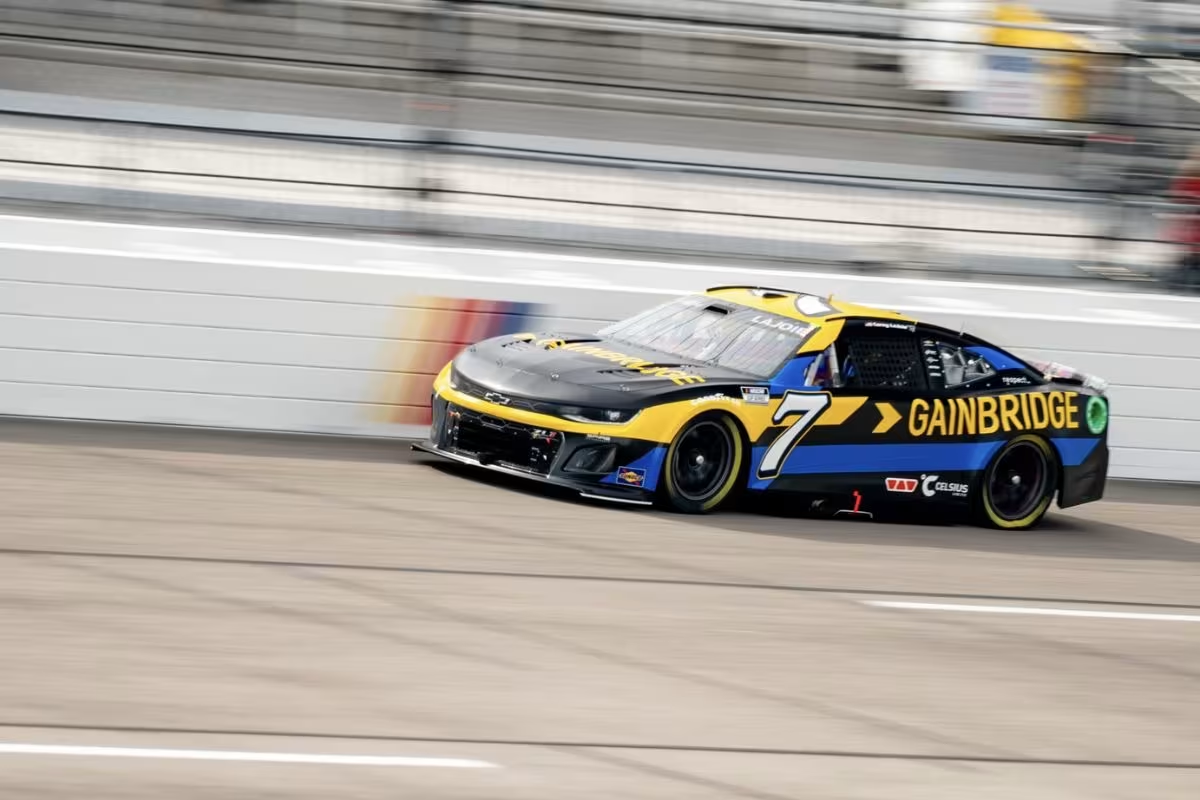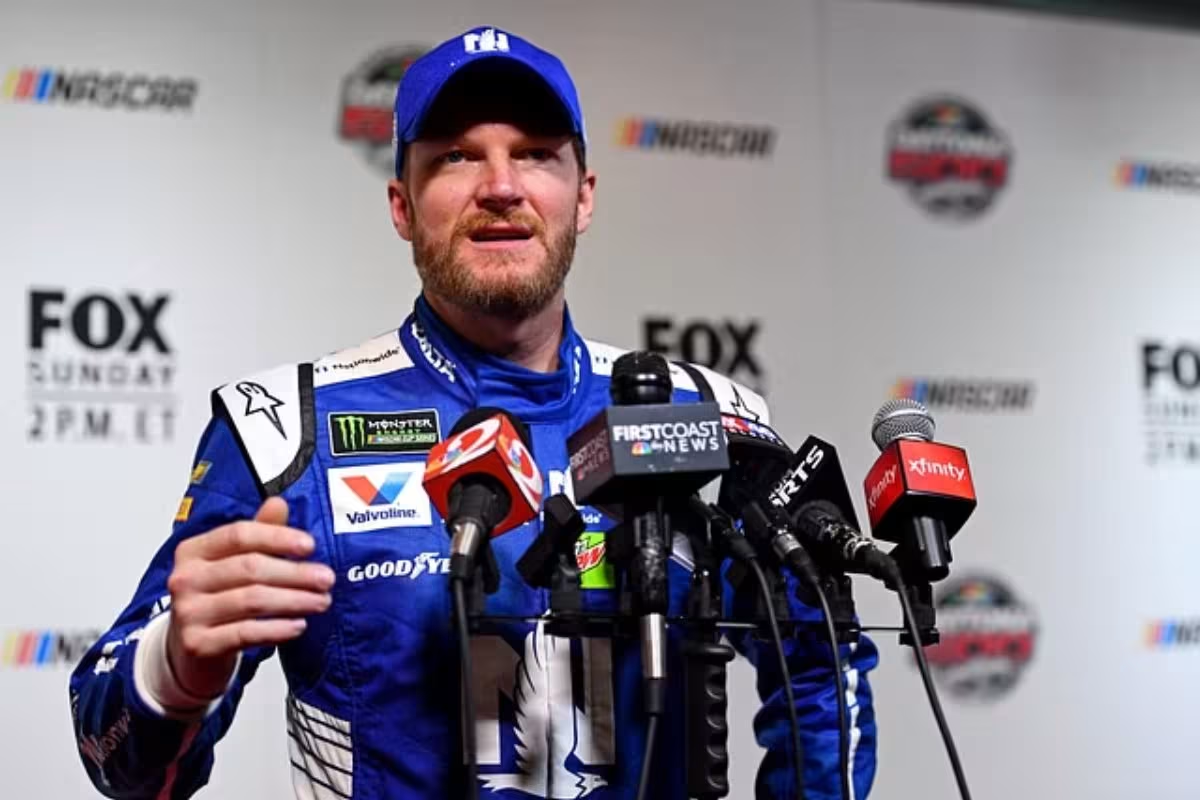Denny Hamlin Faces Harsh Criticism: The recent exchange between NASCAR insider and driver Denny Hamlin has reignited a vital discourse on safety within the sport, particularly following alarming incidents that challenge existing protocols. The insider’s severe claim that “people’s lives are in jeopardy” serves as a potent reminder of the stakes involved in high-speed racing. This tension reflects broader concerns about the efficacy of proposed safety changes and raises questions about the balance between innovation and tradition in NASCAR. As the community grapples with these pressing issues, the implications for both driver safety and the sport’s future remain to be seen.
Key Highlights
- NASCAR insiders stress the urgent need for enhanced safety measures to protect drivers and fans amid rising concerns over high-speed racing risks.
- Denny Hamlin’s skepticism about proposed safety changes highlights a growing divide within the racing community regarding effective safety protocols.
- Historical incidents at Talladega, a NASCAR racetrack, exemplify the dangers of high-speed racing, necessitating ongoing discussions about vehicle stability and driver protection.
- The introduction of new safety innovations, like shark fins, is debated, with some arguing they may not adequately address rollover risks.
- Advocates emphasize that lives are at stake in racing, underscoring the critical importance of proactive safety initiatives in NASCAR.
Corey LaJoie’s Statement on Car Speeds and Ryan Newman’s Crash
The gravity of high-speed racing becomes vividly apparent in the aftermath of catastrophic incidents, such as Ryan Newman‘s harrowing crash during the 2020 Daytona race. Core LaJoie’s observation emphasizes a critical reality: the sheer velocity of 200 miles per hour creates a perilous environment that few can truly grasp until confronted with its aftermath. Newman’s flip was not merely a moment of chaos; it was a glaring reminder of the inherent risks associated with high-speed motorsport.
“Nobody realizes how fast 200 m.p.h. is or how light or how uncontrollable these cars are when they get out of shape.” – LaJoie
LaJoie’s statement highlights the uncontrollable nature of race cars when they veer out of shape, a phenomenon that becomes increasingly perilous at such velocities. The lightweight design of these vehicles, while boosting performance, simultaneously amplifies the consequences of a loss of control. The dynamics of a high-speed race create a unique interplay between engineering skill and the limits of human ability to manage unforeseen circumstances.
Despite the introduction of the Next Gen car in 2022, which aimed to improve safety, the issue of car stability and driver safety remains a pressing concern. Recent series of somersault wrecks have reignited discussions within the NASCAR community about the efficacy of current safety measures.
Hamlin’s Doubt and NASCAR Insiders’ Opinions on Safety Measures
Amidst ongoing discussions about improving safety measures in NASCAR, Denny Hamlin has expressed skepticism regarding the effectiveness of proposed changes. His doubts reflect a broader sentiment among some drivers who question whether incremental adjustments notably impact safety in high-speed racing environments. Hamlin’s concerns are not merely personal; they resonate with an industry grappling with the balance between innovation and tradition.
Contrasting Hamlin’s viewpoint, NASCAR insiders advocate for the necessity of ongoing safety initiatives. They argue that any measure aimed at improving driver protection is crucial, especially considering the potential risks not only to the competitors but also to the spectators. The rationale is clear: the unpredictable nature of racing can lead to catastrophic incidents, and even a minor improvement in safety protocols can mitigate unforeseen dangers.
JOSH BERRY HITS THE WALL WHILE UPSIDE DOWN.
He got out and gave a thumbs up to the crowd. #NASCAR
📺 : NBC and Peacock pic.twitter.com/3OdoRk7EPH
— NASCAR on NBC (@NASCARonNBC) August 25, 2024
Moreover, insiders emphasize that the stakes extend beyond the track. Crashes can lead to debris and chaos that jeopardize fan safety, reinforcing the argument for proactive measures. This perspective positions safety as a shared responsibility among all stakeholders in NASCAR, including drivers, teams, and the sanctioning body.
“The drivers tell you that they would rather flip over than smash a wall, but for fan safety, you can’t have these things flying.” – Freddie Kraft
“The angles that are possible once you start flipping are probably not the safest. They get off the ground. There’s a lot of things at that point that can happen.” – T.J. Majors
The discourse surrounding safety in NASCAR encapsulates a critical intersection of skepticism and advocacy. While Hamlin’s doubts warrant consideration, the collective urgency voiced by NASCAR insiders highlights that any action taken toward improving safety is a step in the right direction, safeguarding the lives of drivers and the passionate fans who support the sport.
Michigan Race Incident and Shark Fin Installation
Corey LaJoie’s harrowing incident during the Michigan racetrack has reignited concerns about vehicle stability and safety measures in NASCAR. The No. 7 Chevrolet’s unexpected spin and flip down the backstretch is a striking reminder of the dangers drivers face on the track. This incident marks the initial blow-over occurrence at a non-superspeedway venue in the NASCAR Cup Series since 2010, prompting urgent discussions among officials and participants about the effectiveness of current safety protocols.
The introduction of shark fins, or air deflectors, was intended to mitigate such incidents, particularly highlighted during the Daytona events. However, their limited success raises questions about their general efficacy. The recent flipping incident involving Josh Berry, where he spun violently before colliding with the wall, further emphasizes the pressing need for improved safety measures.
As NASCAR continues to navigate these challenges, the assessment and refinement of safety measures, including the effectiveness of shark fins, remain critical to ensuring the well-being of its drivers on the track.
Talladega Safety Measure and Hamlin’s Disapproval
Following the recent concerns surrounding vehicle stability in NASCAR, the upcoming race at Talladega has prompted the organization to implement a new shark fin novelty as a safety measure. This decision arises from heightened examination regarding vehicle rollovers, particularly in high-speed situations that can endanger both drivers and spectators.
Denny Hamlin, a prominent figure in the NASCAR community, has publicly voiced his disapproval of this safety initiative. He contends that rollovers, while potentially hazardous, are not inherently detrimental to the sport. Hamlin’s perspective highlights a division within the racing community regarding the balance between safety innovations and the inherent risks of high-speed racing.
In clear contrast, Brett Griffin, host of the “Door, Bumper, Clear” podcast, articulates a compelling argument in favor of the shark fin installation. Griffin stresses the critical nature of safety, asserting that the potential for cars to become airborne poses an unacceptable risk to fans in the stands. He points to statistics indicating that as speeds approach 200 miles per hour, the likelihood of catastrophic rollovers increases greatly.
“We can’t have these cars taking off like airplanes. If any part of the car ends up in the stands, people’s lives are in jeopardy. We can’t go to a racetrack and do that. Like, we know the number – the closer we get it to 200 miles an hour, the more likely they are to flip. We’ve gotta figure out a way to keep these things on the ground.”- Brett Griffin
The debate surrounding the shark fin serves as a microcosm of larger discussions within NASCAR about safety versus tradition. As the organization navigates these complex dynamics, the implications of their decisions extend beyond driver safety, resonating with the audience that cherishes the sport.
Talladega’s Historic Dangers and Dale Earnhardt Jr.’s Thoughts
Throughout its history, Talladega Superspeedway has been synonymous with both thrilling racing and significant danger. Since its opening in 1969, the track has been a focal point for safety concerns within the NASCAR community, highlighted by the initial boycott from prominent drivers like Richard Petty. The 2.66-mile tri-oval, known for its high speeds and unpredictable racing dynamics, remains a double-edged sword that tests the limits of both machinery and human resilience.
The introduction of the Next Gen car intensified these dangers, as evidenced by the alarming incidents in 2022 where several drivers suffered concussions and fractures due to accidents. Dale Earnhardt Jr., a seasoned competitor, has been vocal about the inherent risks associated with racing at Talladega. His personal experiences, including two crashes and witnessing fellow racers flip dangerously, underscore the track’s treacherous nature.
“That’s been the track where every so often we’ve got to ask ourselves some questions and look in the mirror and realize whether what we’re doing at Talladega is what we want to keep doing.”
“When they first started running there, the tires couldn’t handle the speed, and it’s quite interesting — it hasn’t really changed a whole lot. We don’t have tire problems these days, but the track is still potentially one of the more dangerous and wildest tracks that we race at just because of the close-quarter racing and the speed that we’re running.” – Earnhardt
In a 2016 reflection, Earnhardt articulated the track’s perilous atmosphere, emphasizing that the potential for catastrophic incidents looms large, particularly in the face of technological changes in vehicle design.
As discussions around safety protocols continue, it is vital to reflect on Earnhardt’s perspective and the historical context of Talladega’s dangers. The ongoing discourse not only highlights the need for effective safety measures but also serves as a reminder of the fine line that drivers tread between exhilaration and life-threatening risk on the NASCAR circuit.
News in Brief: Denny Hamlin Faces Harsh Criticism
The ongoing discourse surrounding NASCAR safety measures reflects a critical need for innovation and reevaluation of existing protocols. Recent incidents, including the Michigan race and historical dangers at Talladega, underscore the potential risks faced by drivers and spectators alike. The contrasting views between Denny Hamlin and industry insiders highlight a fundamental tension within the sport regarding the efficacy of proposed changes. Ultimately, prioritizing safety advancements remains imperative to safeguard lives within the high-stakes environment of racing.
ALSO READ: Denny Hamlin and His Crew Chief Clash Over Kansas’ Terrible Day



